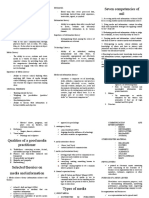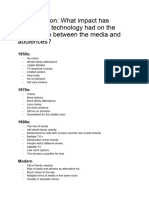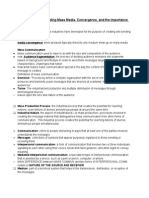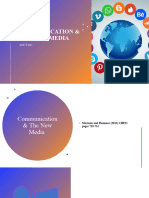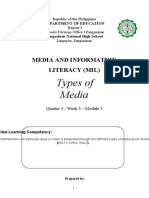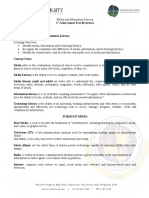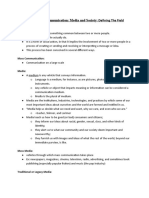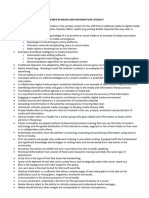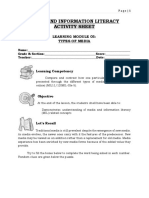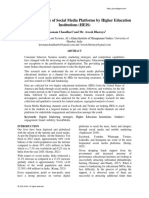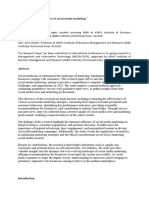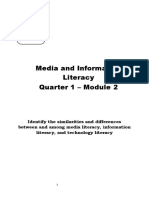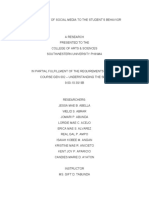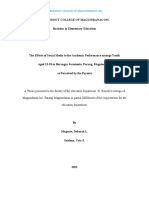0% found this document useful (0 votes)
10 views10 pagesModule 1
The document outlines the key qualities and skills needed for a media writer. It discusses that a media writer should be curious, intelligent, industrious, resourceful, imaginative, persevering, love to read, value facts, love people, and be service-oriented. Key skills include proficiency with media tools, clear writing abilities, organizing data, validating information, and data gathering through observation, document search, and interviews. It also discusses the current media landscape of being oversaturated, accelerating rapidly, and exposing people to high information loads, which media literacy can help address.
Uploaded by
perrywoamn1986Copyright
© © All Rights Reserved
We take content rights seriously. If you suspect this is your content, claim it here.
Available Formats
Download as DOCX, PDF, TXT or read online on Scribd
0% found this document useful (0 votes)
10 views10 pagesModule 1
The document outlines the key qualities and skills needed for a media writer. It discusses that a media writer should be curious, intelligent, industrious, resourceful, imaginative, persevering, love to read, value facts, love people, and be service-oriented. Key skills include proficiency with media tools, clear writing abilities, organizing data, validating information, and data gathering through observation, document search, and interviews. It also discusses the current media landscape of being oversaturated, accelerating rapidly, and exposing people to high information loads, which media literacy can help address.
Uploaded by
perrywoamn1986Copyright
© © All Rights Reserved
We take content rights seriously. If you suspect this is your content, claim it here.
Available Formats
Download as DOCX, PDF, TXT or read online on Scribd
/ 10
